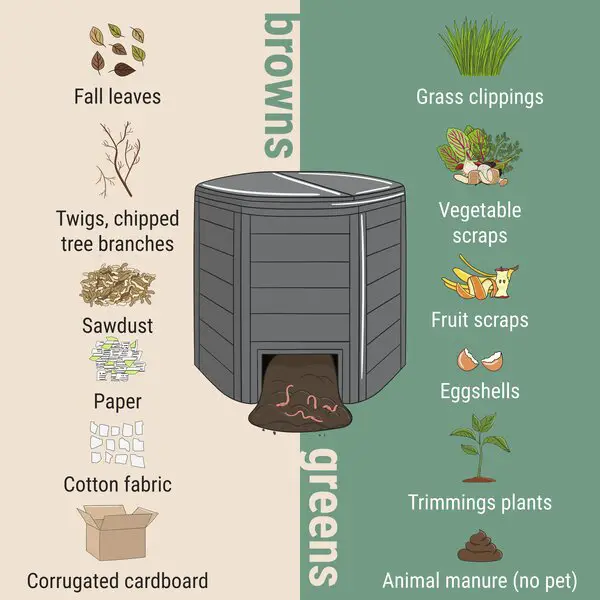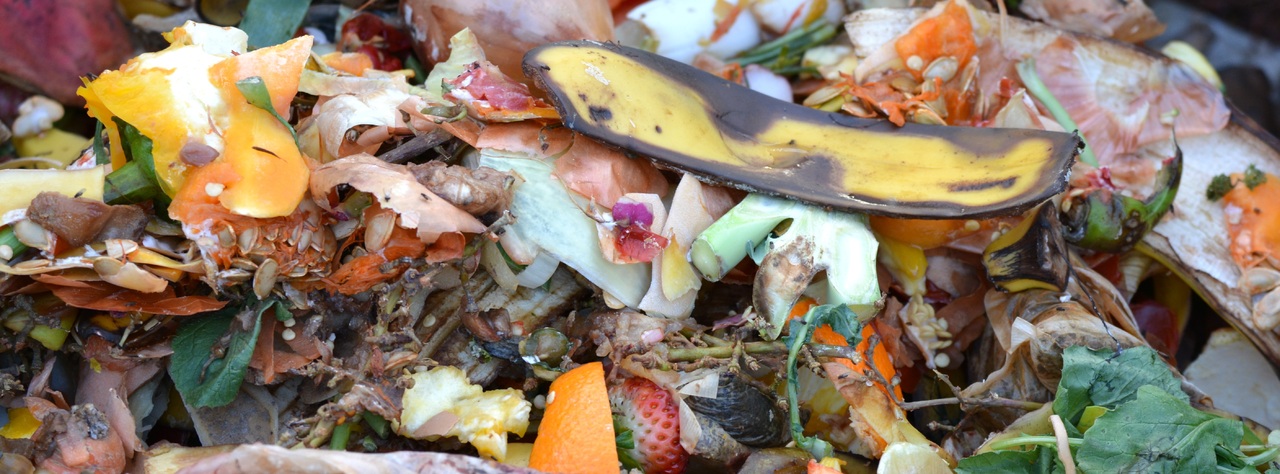Green compost material is high in nitrogen. This is because it is made entirely of fresh, biodegradable materials such as vegetable scraps, house plants, and garden trimmings. The best green materials for compost include cooked or raw veggies, seaweed and fresh grass clippings.
Table of Contents
6 Best Types of Green Materials To Compost
Kitchen waste is an excellent source of compostable material. It’s rich in nutrients and microorganisms that help compost decompose.
| Green materials to compost | Green materials to avoid |
| Raw or cooked veggies | Pine needles |
| Seaweed | Diseased plants |
| Grass clippings | Citrus fruits |
| Holiday decorations | Tree stumps |
| Kitchen staples (coffee grounds, tea bags, pasta, rice, bread) | Fresh manure & meat scraps |
However, some types of kitchen waste contain more nitrogen than others.
1. Vegetable Scraps
Throw in some organic food scraps such as:
- Carrot peels
- Apple cores
- Vegetable stems (raw or cooked)
- Potato peels
- Carrot tops
- Broccoli
Ensure all food waste is free of meat juices or grease before using them.
2. Seaweed
Seaweed is a broad-spectrum fertilizer, providing a healthy dose of nitrogen, hormones, and minerals.
Apart from stimulating plant growth, seaweed mulch has low cellulose and thus breaks down easily.
Before using seaweed, rinse it to remove excess salt.
3. Fresh Grass Clippings
Fresh grass clippings are a great organic material source for your kitchen, garden, and lawn.
The high nitrogen content of grass clippings works wonders in decomposing and breaking down organic matter in a bin.
4. Holiday Decorations
Try composting the following materials often used in decorations:
- Halloween pumpkins
- Christmas trees, garlands, wreaths
- Nuts
- Sticks covered with pretty moss and lichen
- Curls of bark
- Seashells
- Fresh ivy
- Fresh holly
- Wild grapevines made into tiny wreaths
- Succulent rosettes
5. Fruit Scraps
Overall, the best fruits for composting include:
- Melons
- Bananas
- Papayas
- Grapes
- Berries
- Avocados
- Pineapples
- Apples
6. Other kitchen staples
These include:
- Coffee grounds
- Tea bags
- Eggshells
- Pasta
- Rice
- Corn husks/cobs
- Stale bread
Green Materials to Avoid
Here are some green wastes likely to clog your composting process.
1. Pine Needles
Pine needles can be used as green compost material, but only to a certain extent. After all, they decompose slowly and must be mixed with other organic materials to achieve the best results.
Use no more than 10% pine needles in a compost pile for better results.
2. Disease Ridden House Plants
Although most pathogens die during the composting process, some remain active.
Using contaminated organic matter increases the risk of disease transmission to other plants and your mulch.
3. Citrus Fruits
While some people avoid entirely composting high acidic fruits like citrus, doing so in moderation is safe.
However, if you add a large amount of citrus, the high acidity levels can harm the good bacteria and disrupt the composting process.
4. Tree Stumps
Tree stumps and large branches more than five feet tall take longer to decompose. Experts claim it takes four to eight years for tree stumps and large branches to decompose.
The actual time is also affected by the climate and the type of tree. If you intend to compost your Christmas tree branches, cut them into smaller chunks.
How to use Green Materials in Compost

A proper mix of brown and green materials ensures that the composting process works well. Likewise, a bad combination of green and brown slows the decomposition process and stinks the entire yard.
Generally, a 4-part (brown) to 1-part (green) ratio aids in achieving the desired results.
Also, check my list of the best brown compost materials to use.

